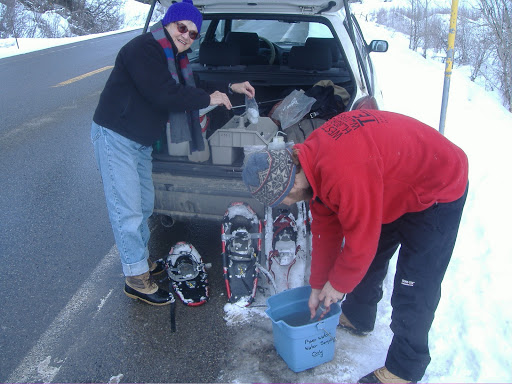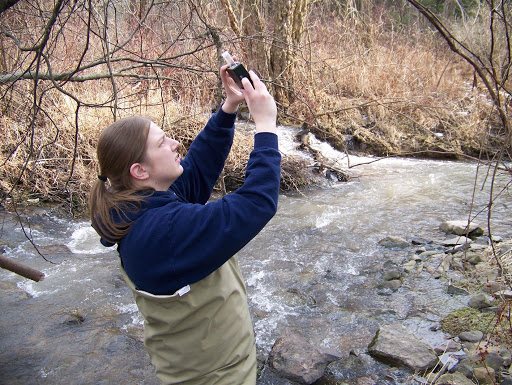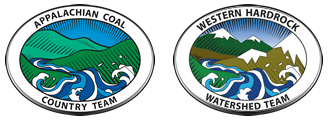Based on the work of
North Fork River Improvement Association
Western Colorado
North Fork River Improvement Association (NFRIA) has a system of water monitoring that is particularly exciting and unique because it is self-sustaining and reliant on volunteers. A small core group acts as the machinery that mobilizes volunteers to conduct water monitoring throughout the area on a regular basis. Two individuals are responsible for organizing volunteers and one handles the supplies. One part-time paid staff person makes phone calls to local landowners to get permission to sample along streams. He also purchases supplies and contacts a local grocer for donated food. This core group is essential to the process because volunteers are less likely to drop out and more likely to return, if this structure is in place. It also needs some form of governmental funding and support to be successful.

Tested by
Friends of Lower Muskingum River
Southeast Ohio
Friends of Lower Muskingum River (FLMR) already had a handful of trained volunteer water monitors to call on for sampling as needed. FLMR works in a large watershed of approximately 600 square miles that contains four separate sub-watersheds. Therefore they needed a program that would create a broad volunteer base. The challenges that FLMR faced involved the time spent acquiring funding for equipment and recruiting attendees for training workshops. FLMR only had one set of monitoring equipment and supplies. They used this kit for volunteer training and for individual monitoring outings, but found it was insufficient to implement this trial practice without more equipment and supplies. FLMR wrote two grants for the equipment needed to successfully implement a wide-scale volunteer monitoring program. Only a portion of one grant request was awarded. They are still trying to secure funding for the additional necessary equipment to be able to send out multiple teams at one time to collect data. FLMR planned three training workshops in different areas of the watershed. One was canceled due to lack of interest, but two training events were held in the spring and one monitoring field event in the summer. This trial practice produced two new members and nine new volunteers to monitor more than 20 new sites within the watershed that had never been monitored before.
Tested by
Lackawanna River Corridor Association
Northeast Pennsylvania
Lackawanna River Corridor Association (LRCA) had already developed a water monitoring program, but felt that this trial practice would offer new approaches to coordinate volunteer water sampling on a consistent basis and increase volunteer retention. They hoped to expand their water monitoring program from a biannual collection to a monthly or bimonthly program due to the increase in natural gas drilling within the watershed. Three individuals were recruited to help revitalize the River Watch program. LRCA also received a grant for approximately $12,000 to create a water quality lab in their office by purchasing new sampling equipment, lab utensils and other necessary tools. With a core group of volunteers established and the equipment needed for monitoring, LRCA was able to lay the groundwork for volunteer monitoring program for many individuals. These benefits, however, were also the challenges that arose during the implementation of this practice. The one-year trial practice period was spent applying for grants and finding volunteers that were enthusiastic about the cause. They were unable to recruit volunteer water monitors to actually conduct monitoring until they had core volunteers to help plan and organize the program overall.

“I would recommend this practice to any watershed group. If you have even one set of sampling equipment, it is useful to engage people in water monitoring because they learn a lot about water quality and it becomes more meaningful for them.”
-Friends of Lower Muskingum River
